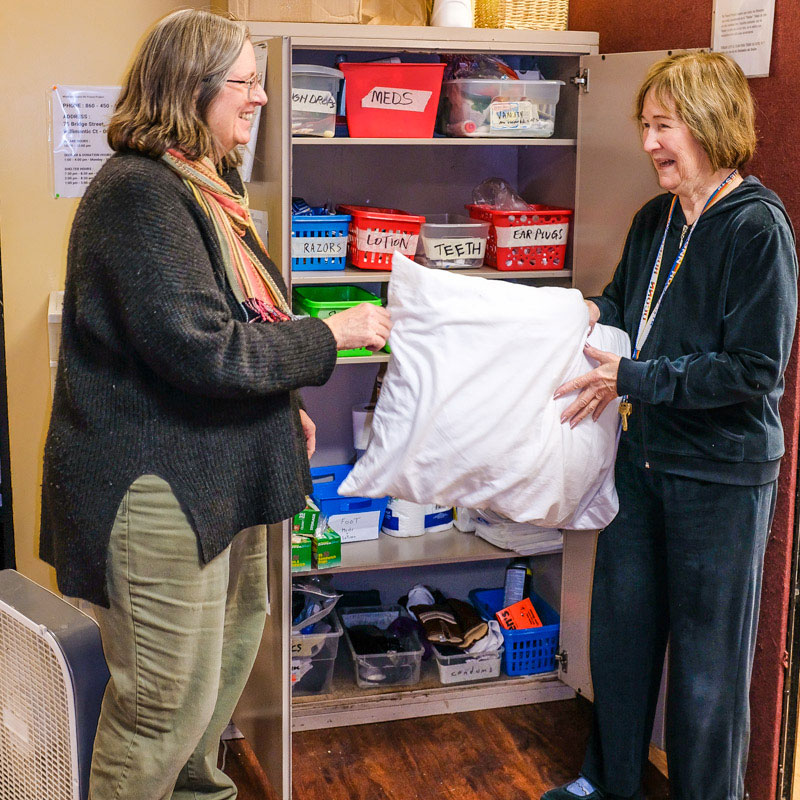By Emma MacDonald
Reduce, Reuse, Recycle. Students learn these words at a very young age. But their meaning and importance are often swept aside as kids grow older. Instead of forgetting about these fundamentals, we should be expanding upon them. Recycling, while accessible and easy, is not the best option of the three for environmental health. In fact, of the three, it is the least environmentally friendly. It is better to reduce your consumption of all items in general, but since consuming nothing at all is impossible in the current state of the world, at least reducing consumption of harmful materials would lessen a person’s environmental impact quite a bit. Reusing an item is also better than recycling it, as less energy is consumed in order to make and recycle one item that someone used over a period of time than two or three or four of the same item in that same window. So here is a list of ways to first reduce, then reuse your items before you recycle them.
Reduce:
- Replace single use items with reusable ones once you have used up all pre-owned single use versions
- Plastic bags → Rope/Canvas produce bags
- Plastic/Paper grocery/shopping bags → Canvas reusable bags
- Single use plastic water bottles → Metal/Glass/Reusable plastic water bottle
- Plastic disposable razor → Metal razor
- Face wipes → Washcloth
- Toothbrush → Electric toothbrush with replaceable heads
- Plastic wrap, Foil, Ziplocs → Tupperware, Fabric Pouches, Beeswax Wrap
- Paper Towels, Napkins → Washcloths, Cloth Napkins
- Water Bottles → Brita Filter or Tap Water
- Straws → Bamboo or Metal straws
- Cutlery → Bamboo cutlery goes well with straws in a zero waste kit!
- Menstrual Products → Period Underwear, Menstrual Cups
- Replace items that come in lots of packaging with ones that have none, less, or biodegradable packaging.
- Unpackaged shampoo/conditioner bars can replace liquid shampoo with a bottle
- Cardboard dispensers biodegrade whereas plastic dispensers don’t
- Buy high quality, less often.
- Borrow items if you only need them once or twice
- Buy in bulk for items that last
- Laundry Detergent
- Cleaning products
- Pasta
- Rice
Reuse:
- Reuse items you have lying around the house
- If you forget your reusable bags at the store and need grocery bags, reuse them as small bin liners or to pick up after a pet.
- Buy items secondhand
- Clothing
- Furniture
- Dishware
- Electronics (buy refurbished)
- Donate unused items to secondhand shops
- See bullets for #2
- Repair broken items rather than recycling them or throwing them away
- Repair Cafes are places where experts can help people to learn how to fix their own items or help to fix them. Look online to find one near you!
And finally, if all else fails, recycle whatever you are unable to cut down on or reuse.
In a blog post like this, we would be at fault if we didn’t mention the privileged nature of individual action. Many sustainable tips include buying a reusable item that is much more expensive than a single use product would be. While, in the long run, these switches can save some people money, the upfront cost may be too much for others. If you happen to be fortunate enough to be able to afford all these tips, please consider also donating money or a box of these reusable items to a shelter or to a charity of your choice.

Some local to Storrs suggestions follow:
- Mercy Housing and Shelter Corporation
- Windham Area Interfaith Ministry
- Willimantic No Freeze Shelter
- Norwich No Freeze Shelter
- Holy Family Home and Shelter
- MACC Charities
Follow UConn Office of Sustainability on Instagram
Newsletter Sign Up
Support Sustainability at UConn
Sources:
https://communityoutreach.uconn.edu/semester-long-programs/#SS
https://communityoutreach.uconn.edu/philanthropy/
https://www.nrdc.org/stories/reduce-reuse-recycle-most-all-reduce